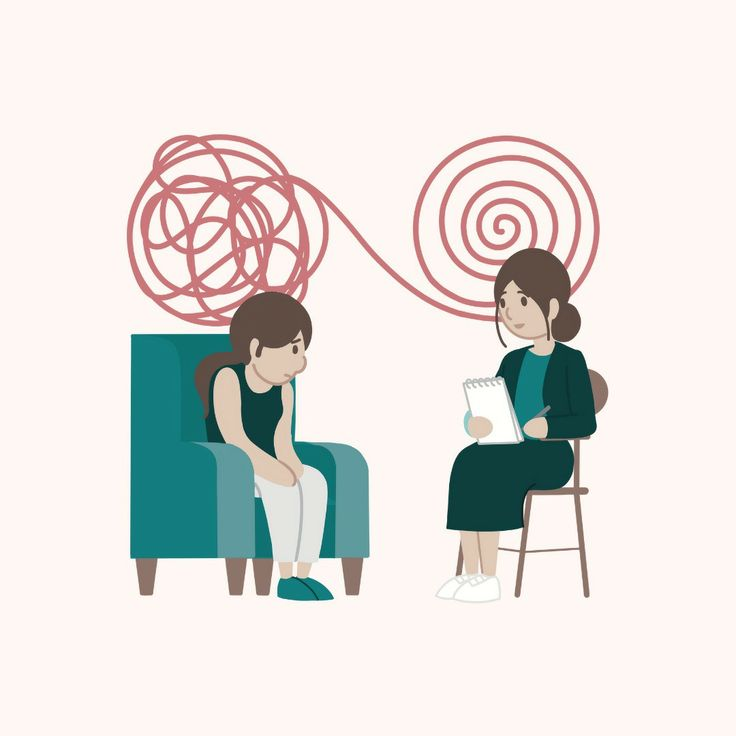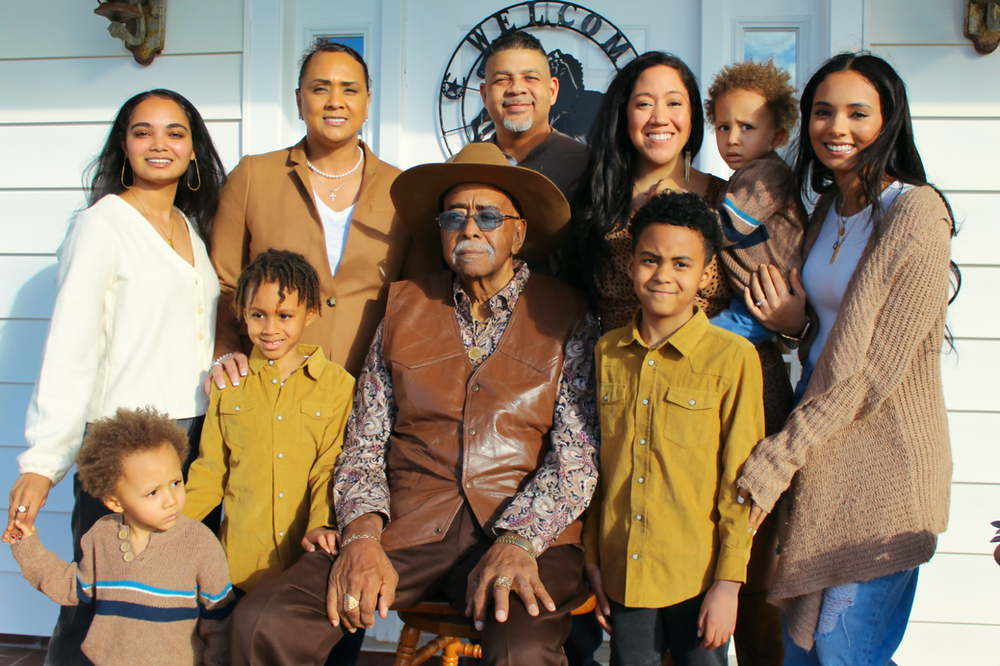Anxiety is something nearly everyone experiences, whether it’s a racing heart before a presentation, sleepless nights worrying about the future, or overwhelming feelings of dread in social situations. It can come in waves, or it can linger, affecting day-to-day life. Anxiety can be crippling, making even the simplest tasks feel insurmountable. However, it’s important to remember that anxiety is not a sign of weakness or failure; it’s a natural response that we all encounter at different points in our lives. What’s more, anxiety can be managed and treated with effective, evidence-based approaches like Cognitive Behavioral Therapy (CBT).
At Be Your Best Self & Thrive, we understand how debilitating anxiety can feel, but we also know that it’s possible to live a fulfilling life free from the constant grip of fear and worry. Our team of compassionate clinicians has helped countless individuals take control of their anxiety through CBT, a structured and goal-oriented therapy that teaches individuals how to reframe their thoughts, change their behaviors, and ultimately, transform their emotional responses.
In this blog, we’ll explore what CBT is, how it works for anxiety, and provide real-world examples of how this therapy can change lives. Plus, we’ll introduce you to our dedicated team of clinicians, who are ready to support you on your journey to healing.
Key Takeaways:
Cognitive Behavioral Therapy (CBT) helps people understand and change the connection between their thoughts, feelings, and behaviors.
CBT is one of the most effective treatments for anxiety, including social anxiety, generalized anxiety disorder (GAD), panic disorder, and phobias.
It helps individuals identify negative thought patterns, challenge them, and replace them with healthier beliefs, while also teaching coping mechanisms for managing anxiety.
Our clinicians, Rochelle Young, Jessi Deleo, and Jamie Molnar, specialize in using CBT and other holistic techniques to help clients manage their anxiety and thrive in their everyday lives.
What is Cognitive Behavioral Therapy (CBT)?
Cognitive Behavioral Therapy is a form of psychotherapy that focuses on helping individuals understand the connection between their thoughts, emotions, and behaviors. The central idea is that our thoughts can heavily influence how we feel and act. Negative thought patterns—known as cognitive distortions—can lead to emotional distress and problematic behaviors. These patterns are often automatic, deeply ingrained, and may go unnoticed without proper guidance.
CBT works by helping individuals become aware of these negative thought cycles, challenge them, and replace them with more balanced, realistic thoughts. This shift in thinking not only reduces anxiety but also helps individuals respond to stressful situations in healthier ways.
When is CBT Used?
CBT is a highly adaptable form of therapy that can be used to treat a variety of mental health issues, including:
Anxiety disorders (e.g., social anxiety, generalized anxiety, panic attacks, phobias)
Obsessive-compulsive disorder (OCD)
Post-traumatic stress disorder (PTSD)
While it’s commonly used for anxiety, CBT is effective for many mental health concerns because it empowers clients to take control of their thoughts, emotions, and behaviors. One of the advantages of CBT is its structured and short-term nature—most clients begin to see improvements within a few sessions, making it an ideal treatment for individuals looking for practical solutions to their anxiety.
How Does CBT Help with Anxiety?
Anxiety often stems from irrational or unhelpful thoughts—such as fears of failure, rejection, or catastrophic outcomes—that feed into emotional distress and self-defeating behaviors. For instance, a person with social anxiety may believe that they will be harshly judged in every social situation, leading them to avoid gatherings, which in turn increases their isolation and reinforces their fears.
CBT works to break this cycle by:
Identifying Negative Thought Patterns: The first step is recognizing the thoughts that trigger anxiety. Common examples include “I’m going to fail” or “Everyone will think I’m stupid.” These automatic thoughts often spiral into larger fears.
Challenging These Thoughts: Once identified, the therapist works with the client to challenge the validity of these beliefs. Are they based on facts, or are they exaggerated and unrealistic? Clients learn to question their thoughts critically and explore alternative perspectives.
Replacing Negative Thoughts: As clients become more skilled at challenging their anxious thoughts, they can replace them with more balanced and realistic beliefs, such as “Even if I make a mistake, I can handle it,” or “People probably aren’t as focused on me as I think.”
Exposure Therapy: A key component of CBT for anxiety is exposure therapy, where clients gradually face their fears in a controlled and safe environment. By repeatedly exposing themselves to anxiety-provoking situations, clients learn that their fears are often unfounded, and over time, the intensity of the anxiety diminishes.
Real-Life Examples of CBT for Anxiety
Sometimes, hearing about others’ experiences can help put therapy into perspective. Here are a few examples of how CBT can transform anxiety into calm, manageable emotions:
Case Example 1: Social Anxiety – Client: Sarah, a 30-year-old teacher, has always felt overwhelming anxiety in social settings, particularly when meeting new people or speaking in front of groups. She frequently experiences a racing heart, shaking hands, and an intense fear of saying something “stupid.”
CBT Approach: Sarah’s therapist helps her identify the core beliefs that fuel her anxiety, such as “Everyone is judging me” and “I’ll embarrass myself.” Through cognitive restructuring, Sarah learns to challenge these thoughts by reflecting on past experiences where her fears did not come true. Exposure therapy is then introduced, allowing Sarah to gradually face her fears by speaking in smaller, more familiar groups, and eventually progressing to larger audiences.
Outcome: After 10 sessions, Sarah’s social anxiety significantly decreases. She’s able to engage in conversations without excessive worry, and her confidence in public speaking has grown. By addressing her fears head-on, she now feels more comfortable in social settings.
Case Example 2: Panic Disorder – Client: Tom, a 45-year-old engineer, experiences sudden, intense panic attacks. These episodes are often triggered by crowded places or stressful work situations. During a panic attack, Tom feels short of breath, dizzy, and convinced he’s having a heart attack.
CBT Approach: Tom’s therapist educates him about the nature of panic attacks, reassuring him that they are not dangerous, even though they feel overwhelming. Together, they identify the thoughts that escalate his panic, such as “I’m going to pass out” or “Something terrible will happen.” Through CBT, Tom learns breathing techniques and grounding exercises to manage his panic symptoms, and over time, engages in exposure therapy by gradually spending time in previously anxiety-provoking situations, like busy public spaces.
Outcome: Over the course of 15 sessions, Tom’s panic attacks become less frequent and less intense. He now feels equipped to handle crowded places and stressful environments without the fear of losing control.
Case Example 3: Generalized Anxiety Disorder (GAD) – Client: Jenny, a 38-year-old accountant, struggles with constant worry. Her mind is consumed with “what if” scenarios—“What if I lose my job?” “What if something happens to my kids?”—that leave her feeling tense and exhausted.
CBT Approach: Jenny’s therapist helps her track her anxious thoughts and examine the likelihood of these fears coming true. Together, they practice cognitive restructuring, where Jenny replaces catastrophic thoughts with more realistic ones, such as “Even if I encounter a challenge, I’ll find a way to manage it.” Relaxation techniques, including mindfulness and progressive muscle relaxation, are also introduced to help Jenny manage her physical anxiety symptoms.
Outcome: After 12 sessions, Jenny’s generalized anxiety significantly decreases. She learns to focus on the present rather than the worst-case scenarios that once dominated her thoughts. By gaining control of her thought patterns, Jenny is now able to navigate her day-to-day life with a sense of calm.
Meet Our Clinicians
At Be Your Best Self & Thrive, our team is passionate about helping individuals overcome their anxiety and lead healthier, more balanced lives. We know firsthand how anxiety can feel overwhelming and isolating, and we’re here to provide you with the support and tools you need to thrive.
Rochelle Young
Rochelle specializes in anxiety, depression, self-esteem, and life transitions. With a compassionate, client-centered approach, she empowers clients to regain control of their lives through CBT and Dialectical Behavior Therapy (DBT). Rochelle helps clients identify the root causes of their anxiety and provides them with practical tools to manage it. Her calming presence and empathetic nature create a safe space for clients to explore their fears, challenge their thoughts, and cultivate self-compassion.
Jessi Deleo
Jessi’s approach combines mindfulness, stress management, and cognitive restructuring to help clients reconnect with their present selves and gain mastery over their anxiety. Jessi understands that anxiety can feel like an uncontrollable force, but she believes that with the right strategies, anyone can learn to manage it. Her warm, down-to-earth style helps clients feel understood and supported throughout their therapeutic journey.
Jamie Molnar, Owner of BYBS
As the owner of Be Your Best Self & Thrive, Jamie’s expertise lies in anxiety, burnout, and perfectionism. In addition to CBT, Jamie incorporates yoga psychology and mindfulness into her practice, offering a holistic approach to anxiety treatment. She works with highly sensitive individuals, empaths, and professionals who often experience anxiety due to the demands of their lives. Jamie’s integrative approach focuses not just on the mind but also on the body, helping clients find balance, inner peace, and long-lasting change.
Conclusion
Anxiety is something we all face, but it doesn’t have to control your life. Through Cognitive Behavioral Therapy, it’s possible to break free from the chains of anxiety and live with greater peace and confidence. The key is recognizing that your thoughts, feelings, and behaviors are interconnected, and with the right tools, you can regain control.
If you’re struggling with anxiety, know that help is available. Our team at Be Your Best Self & Thrive is here to guide you through your healing journey. With compassion, expertise, and evidence-based practices like CBT, we’ll help you take the first step toward a life free from anxiety.
Q&A Section
Q: How long does CBT treatment typically last?
A: CBT is generally short-term, with most clients noticing improvements in 12-20 sessions. However, the exact duration depends on the severity of the anxiety and individual progress.
Q: Can CBT help with panic attacks?
A: Yes! CBT is highly effective in treating panic attacks by teaching individuals how to manage their physical symptoms, challenge catastrophic thoughts, and gradually expose themselves to anxiety-provoking situations.
Q: How do I know if CBT is the right therapy for me?
A: If you struggle with negative thought patterns, emotional distress, and behaviors that interfere with your daily life, CBT could be a good fit. It’s especially helpful for anxiety and depression, but your therapist can help determine the best course of treatment during an initial consultation.
Note from the BYBS Content Creator: Alayna
As someone passionate about mental health and holistic healing, I believe that everyone deserves the opportunity to thrive. Anxiety is real, but it doesn’t have to define you. Cognitive Behavioral Therapy offers practical, effective solutions, and I hope this blog has given you valuable insight into how CBT can help you or someone you love. We’re here to support you at Be Your Best Self & Thrive.
Let’s be our best selves and relieve our anxiety,
Alayna Dorfman






